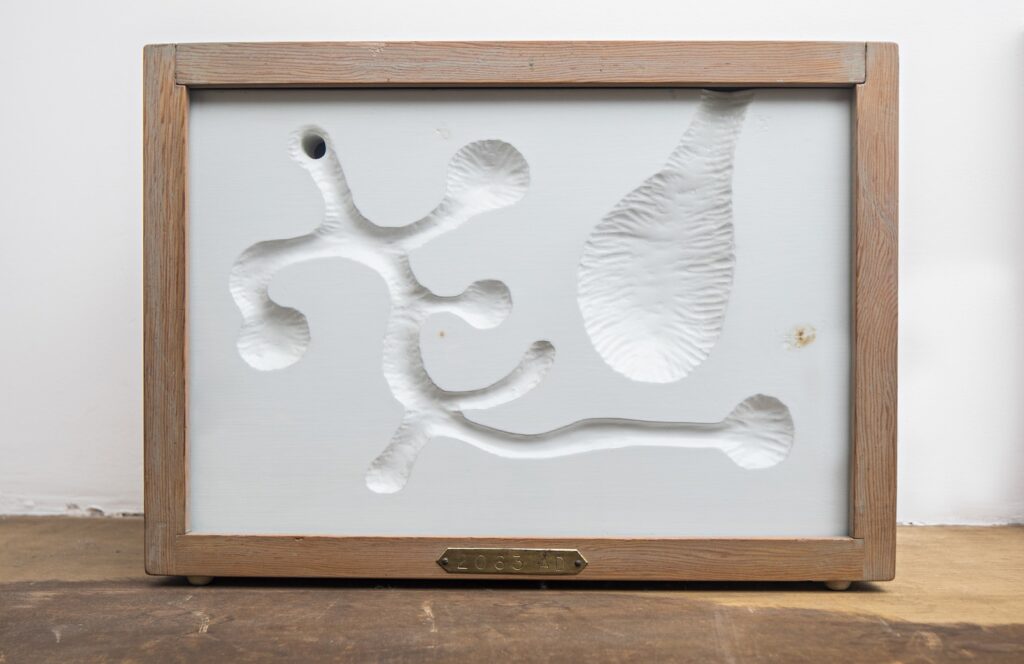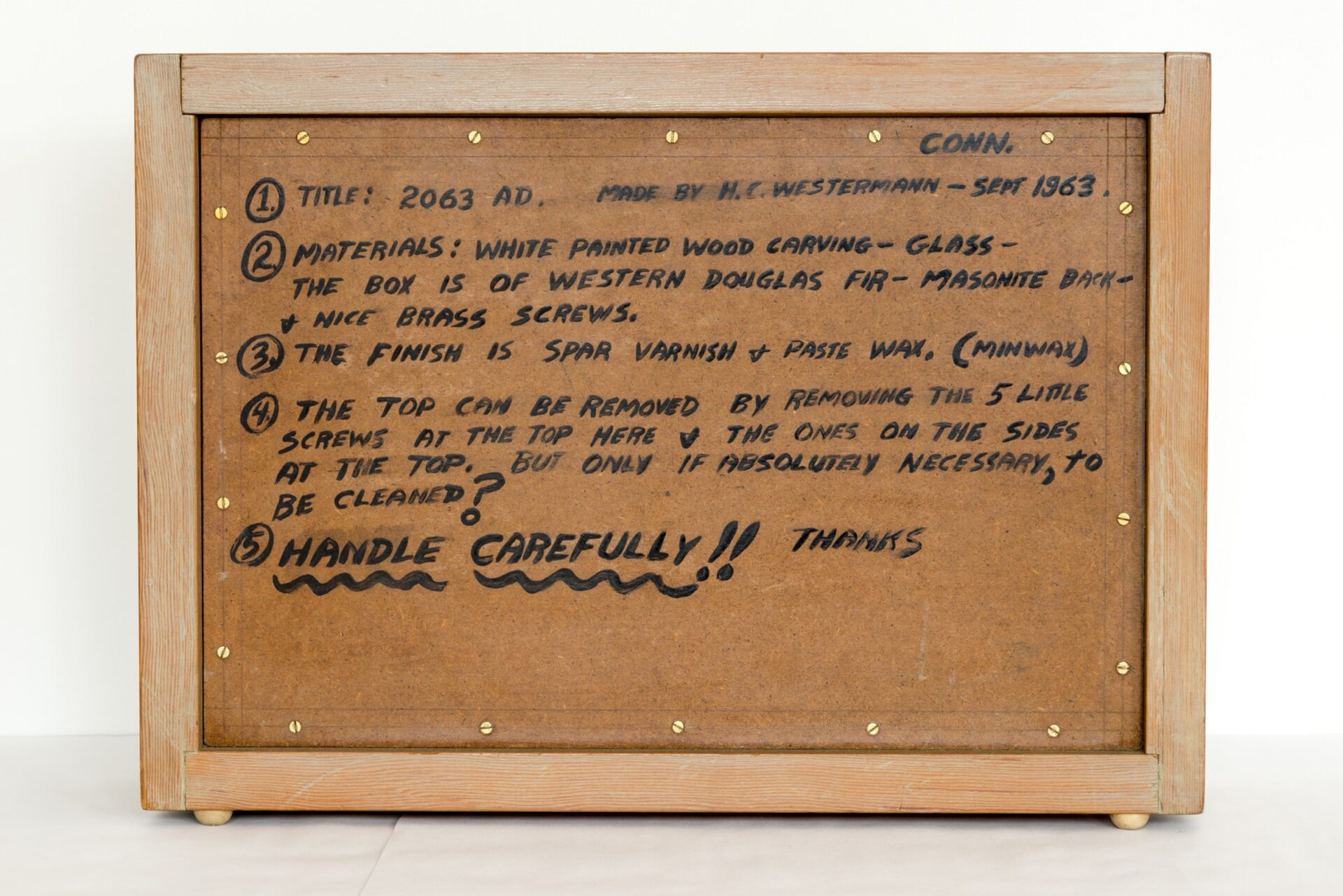H.C. Westermann was born Horace Clifford Westermann in Los Angeles, California. He served as a marine during World War II and the Korean War and later studied at the Art Institute of Chicago under the G.I. Bill. There were two retrospectives of Westermann’s work held during his lifetime, the first in 1968 at the Los Angeles Museum of Contemporary Art, and the second a decade later in 1978 at the Whitney Museum of American Art, New York.
Westermann borrowed the title for this work—a box-shaped capsule containing a painted, carved piece of wood—from a booklet titled 2063 A.D., published in 1963 by General Dynamics Astronautics in San Diego, California.1 The booklet compiled predictions by politicians, military commanders, and scientists regarding the future of human space travel in one hundred years. A particularly enthusiastic commander wrote, “During my lifetime a popular cliché has been ‘the sky’s the limit,’ but who knows what is the limit of the sky?” A limited number of copies of the booklet were produced, and one was sealed into a time capsule at the company headquarters.
Westermann and his wife Joanna briefly owned a house in Marfa in the 1970s, although they never met Donald Judd.


